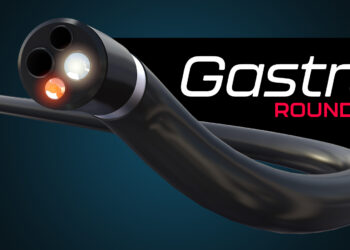- Two randomized trials found that intra-arterial urokinase and tenecteplase did not improve functional outcomes after mechanical thrombectomy in selected stroke patients.
- However, these results do not exclude a relevant treatment effect, and further investigation is ongoing.
- There were no safety signals regarding mortality or symptomatic intracranial hemorrhage with either lytic in these trials; only tenecteplase was associated with an increase in any radiologic intracranial hemorrhage at 48 hours.
For stroke patients undergoing mechanical thrombectomy, adjunctive intra-arterial thrombolytics fell short for further improving outcomes in two randomized trials.
First, in POST-UK, there was a trend toward better odds of an excellent functional outcome — survival without disability at 90 days — among patients who received a single periprocedural intra-arterial injection of urokinase, but this did not reach statistical significance (45.1% vs 40.2% in the control group; adjusted risk ratio [RR] 1.13, 95% CI 0.94-1.36), reported Yangmei Chen, MD, of the Second Affiliated Hospital of Chongqing Medical University in China, and colleagues.
In the POST-TNK trial of similar stroke patients, the same team reported that intra-arterial tenecteplase did not significantly increase the proportion of those achieving modified Rankin Scale 0-1 excellent outcomes (49.1% vs 44.1%; adjusted RR 1.15, 95% CI 0.97-1.36).
These two trials, each counting over 500 participants and conducted across nearly three dozen hospitals in China from 2022 to 2024, were both published in JAMA.
As for safety, intra-arterial urokinase and tenecteplase were not associated with an increase in mortality or symptomatic intracranial hemorrhaging (sICH). There was, however, an excess in any radiologic intracranial hemorrhage at 48 hours in tenecteplase recipients (36.6% vs 27.3% of controls; adjusted RR 1.33, 95% CI 1.04-1.69).
The study authors had hypothesized that intra-arterial thrombolysis could be an adjunctive therapy that further helps patients with acute ischemic stroke who were treated with thrombectomy and who already achieved reperfusion grades of expanded Thrombolysis in Cerebral Infarction (eTICI) 2c or higher.
“Even when successful reperfusion is achieved (eTICI, 3), it is thought that there may still be impaired reperfusion on a microvascular level, which may be an important cause of post-stroke disability. By administering intra-arterial thrombolytics periprocedurally, small components of the intra-arterial emboli could be dissolved, aiding microvascular reperfusion,” explained a trio led by Diederik Dippel, MD, PhD, of Erasmus University Medical Center in Rotterdam, the Netherlands, in an accompanying editorial.
Earlier, findings from the CHOICE trial had suggested that stroke patients with near-complete or complete reperfusion who received intra-arterial alteplase may be more likely to have better functional outcomes — yet that trial was far from definitive, as it had been terminated early.
“The evidence for an effect of intra-arterial thrombolytics is not yet sufficient to warrant its implementation in clinical practice,” Dippel’s group wrote. “Nevertheless, the POST-UK and POST-TNK investigators should be commended for their effort of conducting 2 trials. Their results, although nonsignificant, do not exclude a relevant treatment effect.”
They noted that further study is ongoing, including the TECNO trial testing tenecteplase, and 2BE3 assessing mechanical (i.e., small stent retrievers or small aspiration catheters) or pharmacological (i.e., intra-arterial thrombolytics) interventions in distal vessels in addition to mechanical thrombectomy with or without intravenous thrombolytics for stroke.
For POST-UK and POST-TNK, Chen and colleagues had enrolled adult stroke patients with proximal intracranial large vessel occlusion presenting within 24 hours of time last known well, who achieved near-complete or complete reperfusion by endovascular thrombectomy, and who did not receive intravenous thrombolysis prior to the procedure.
POST-UK included 534 patients randomized to intra-arterial urokinase (100,000 IU injected in the initial target territory) or a control group who did not receive intra-arterial thrombolysis. Median age was 69, 41.8% were women, and median baseline NIH Stroke Scale score was 15. Median Alberta Stroke Program Early CT Score (ASPECTS) was 8, and median last known well time to randomization was almost 9 hours.
In POST-TNK, 540 patients were randomized to intra-arterial tenecteplase (0.0625 mg/kg) or a control group. Median age was 69, 40.9% were women, median baseline NIH Stroke Scale score was 15, median ASPECTS was 8, and the median last known well time to randomization was over 8 hours.
In POST-UK, rates of 90-day mortality were comparable between the urokinase and control arms (18.4% vs 17.3%; adjusted HR 1.06, 95% CI 0.71-1.59). The incidence of sICH was 4.1% in both groups.
As for POST-TNK, no differences in 90-day mortality (16% vs 19.3%; adjusted HR 0.75, 95% CI 0.50-1.13) or sICH (6.3% vs 4.4%; adjusted RR 1.43, 95% CI 0.68-2.99) were observed between the tenecteplase and control groups.
Notably, both studies were open-label, an important limitation acknowledged by the investigators. What’s more, given the populations studied, Chen and colleagues cautioned that their results may not be generalizable to patients receiving intravenous thrombolytics prior to thrombectomy and non-Asian populations.
Disclosures
POST-UK and POST-TNK were supported by government grants from China and Chongqing. The urokinase doses were provided by Wuhan Humanwell Pharmaceutical Co., and tenecteplase was provided by China Shijiazhuang Pharmaceutical Company Recomgen Pharmaceutical.
Chen had no disclosures. Study co-authors reported numerous ties to industry.
Dippel and co-editorialists had no disclosures.
Primary Source
JAMA
Source Reference: Liu C, et al “Intra-arterial urokinase after endovascular reperfusion for acute ischemic stroke: the POST-UK randomized clinical trial” JAMA 2025; DOI: 10.1001/jama.2024.23480.
Secondary Source
JAMA
Source Reference: Huang J, et al “Intra-arterial tenecteplase following endovascular reperfusion for large vessel occlusion acute ischemic stroke: the POST-TNK randomized clinical trial” JAMA 2025; DOI: 10.1001/jama.2024.23466.
Additional Source
JAMA
Source Reference: Dippel DWJ, et al “Intra-arterial thrombolytics during thrombectomy for ischemic stroke — end of the story or a new beginning?” JAMA 2025; DOI: 10.1001/jama.2024.27100.
Source link : https://www.medpagetoday.com/neurology/strokes/113758
Author :
Publish date : 2025-01-13 21:14:47
Copyright for syndicated content belongs to the linked Source.


![author['full_name']](https://newshealth.biz/wp-content/uploads/2025/01/Intra-Arterial-Lytics-After-Successful-Stroke-Thrombectomy-Did-Not-Improve-Outcomes.jpg)












